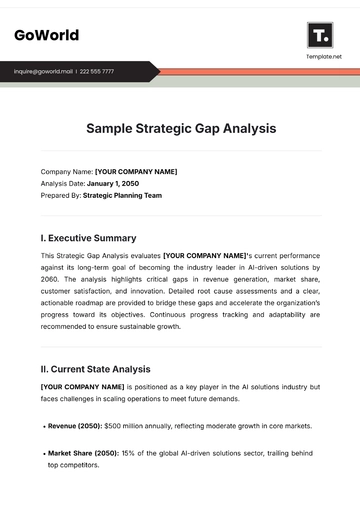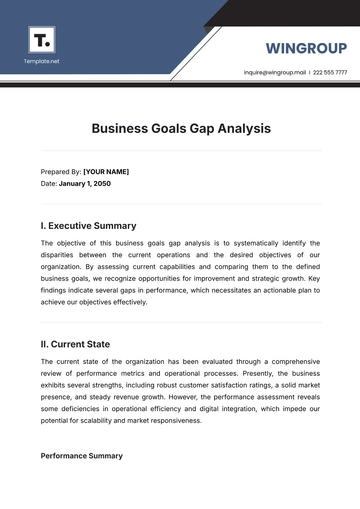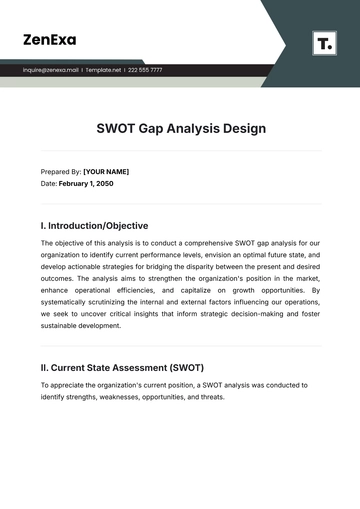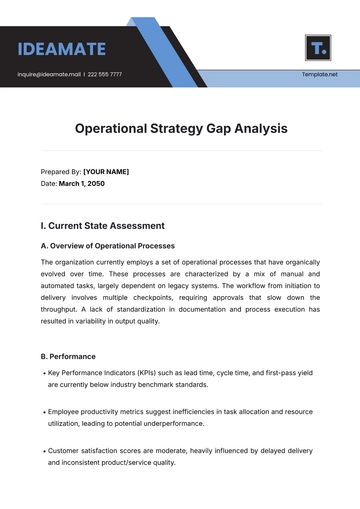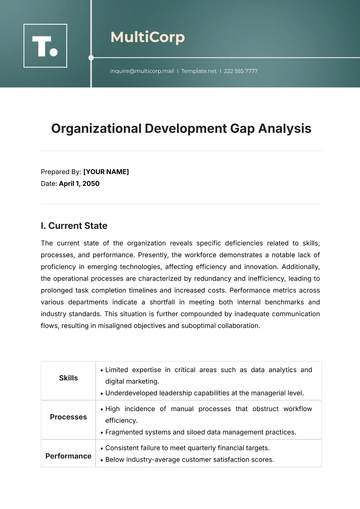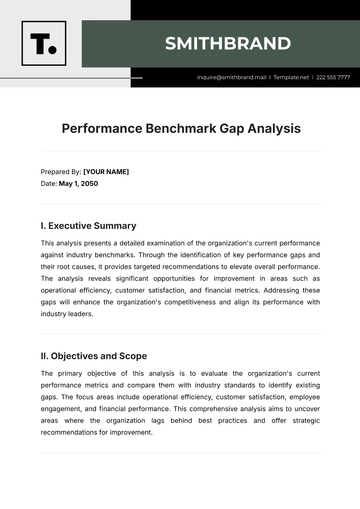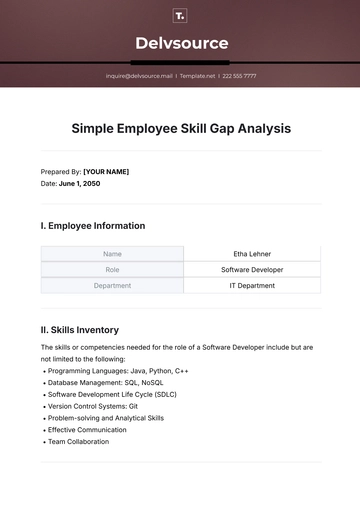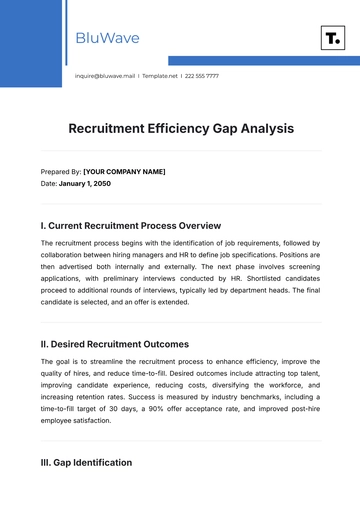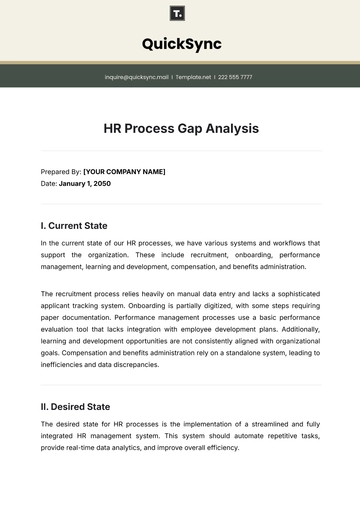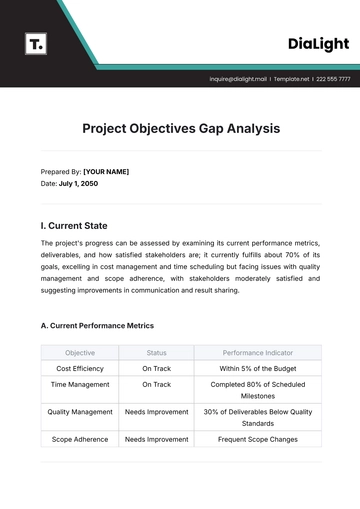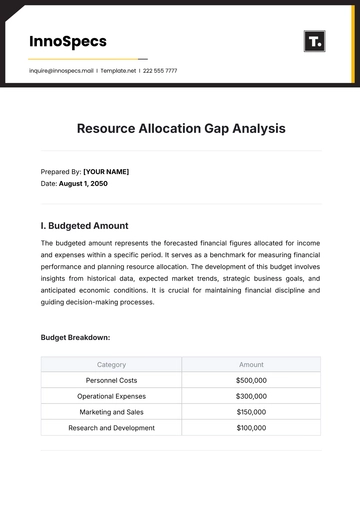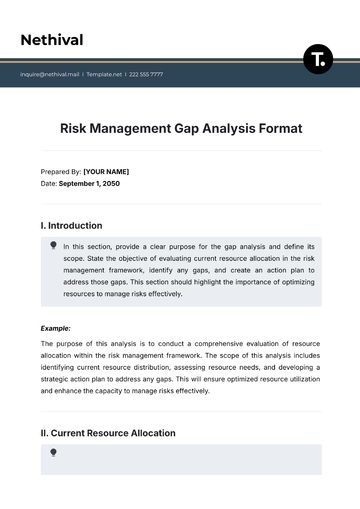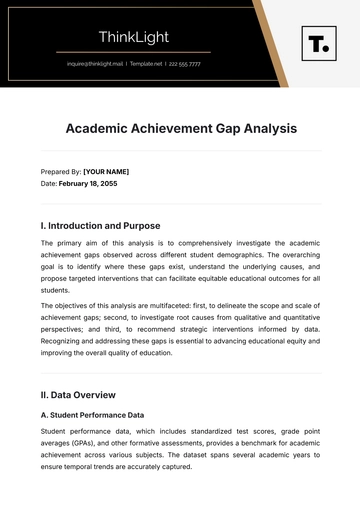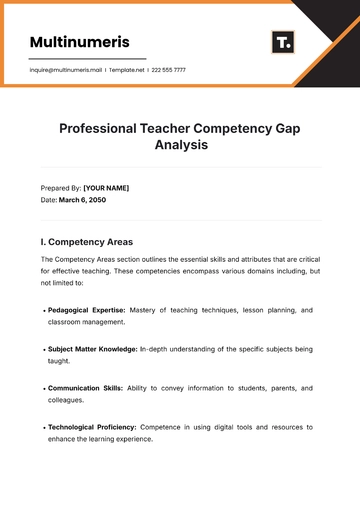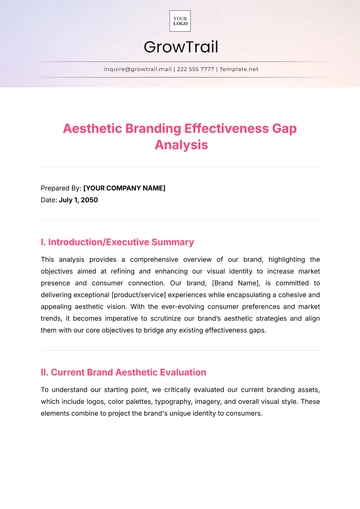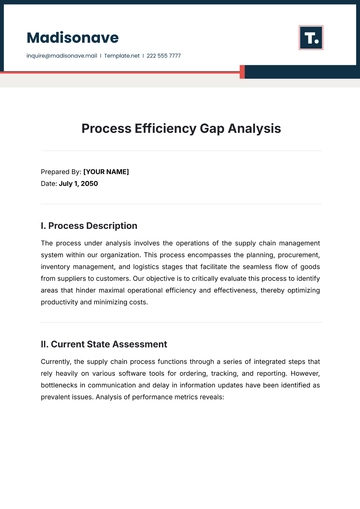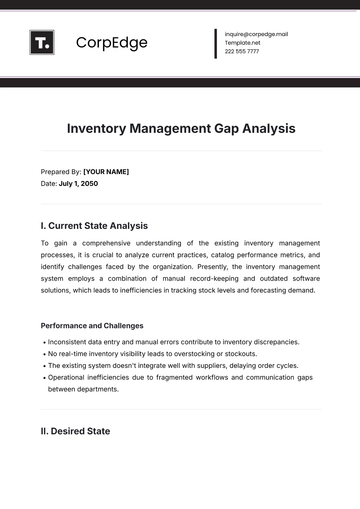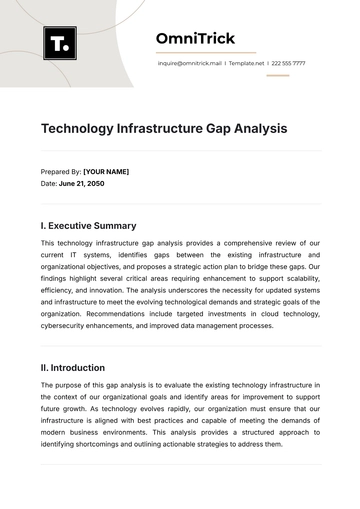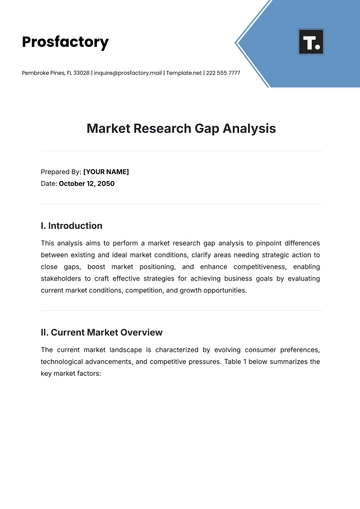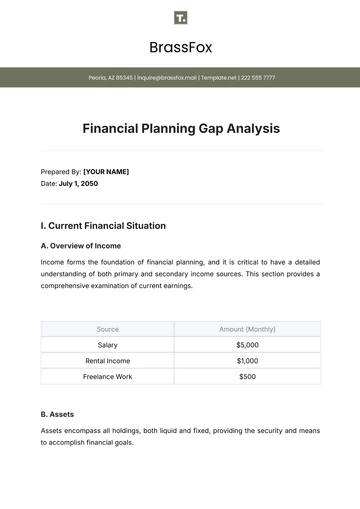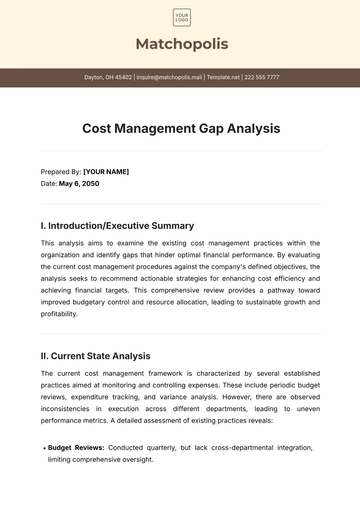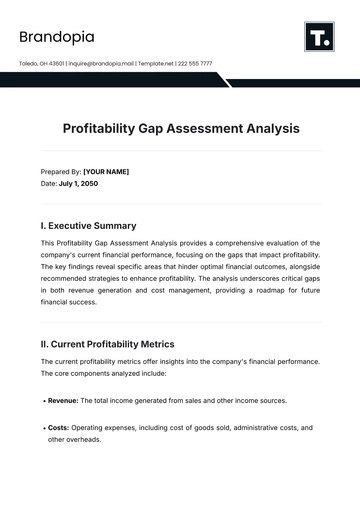Free Sales Lead Optimization Analysis
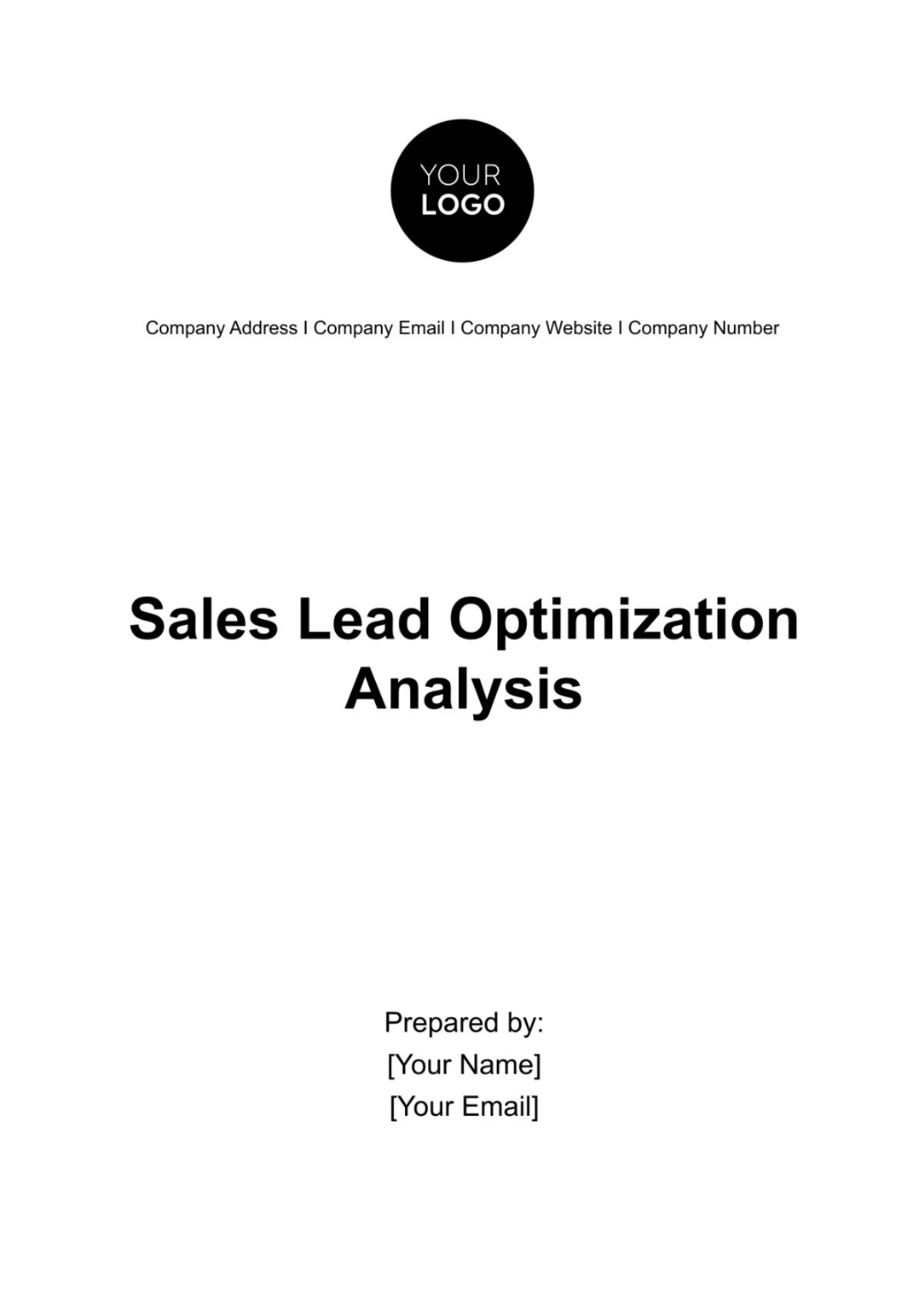
Executive Summary
In this Sales Lead Optimization Analysis, we aim to thoroughly evaluate the performance of our lead generation and conversion processes. The objective is to provide a detailed assessment of our lead management strategy, identify areas for improvement, and enhance the overall efficiency of our sales funnel. By focusing on lead sources, lead quality, and conversion rates, we will be better equipped to make data-driven decisions for future success.
1. Introduction
1.1 Purpose
The purpose of this Sales Lead Optimization Analysis is multi-faceted, underpinned by the overarching goal of enhancing our lead management strategy. It serves as a crucial instrument in our ongoing pursuit of operational excellence and revenue growth. In a more detailed context, the purpose can be articulated as follows:
1.1.1 Performance Evaluation: The primary aim of this analysis is to evaluate the performance of our lead generation and conversion processes. By conducting a rigorous examination, we seek to understand how well our existing strategies align with our sales objectives. This performance evaluation is pivotal for informed decision-making.
1.1.2 Identification of Improvement Opportunities: Beyond a performance assessment, the analysis is intended to identify areas within our lead management processes that offer opportunities for improvement. It is about identifying bottlenecks, streamlining operations, and capitalizing on successful strategies.
1.1.3 Data-Driven Decision-Making: This analysis is inherently rooted in the principle of data-driven decision-making. We aim to gather concrete data, analyze it, and make strategic decisions based on the insights derived. The objective is to replace guesswork with informed choices.
1.1.4 Strategic Alignment: By conducting this analysis, we strive to ensure that our lead management processes are closely aligned with our broader strategic goals. This purpose underscores the importance of a harmonious integration of sales and marketing efforts.
1.1.5 Revenue Maximization: Ultimately, the purpose is to set the stage for revenue growth. Through optimization of our lead generation, lead quality assessment, and conversion processes, we aim to maximize the number of leads that translate into paying customers.
1.1.6 Resource Allocation: The analysis aids in effective resource allocation. It guides us in directing our resources towards strategies and channels that yield the highest returns, thus enhancing efficiency.
1.1.7 Competitive Edge: In a competitive business landscape, gaining an edge is imperative. This analysis enables us to fine-tune our lead management strategies, making us more agile and responsive to market dynamics.
1.1.8 Customer-Centric Approach: Our purpose includes a customer-centric focus. We aim to provide leads with an exceptional experience from their first interaction to their conversion and beyond. By understanding their needs and preferences, we can better tailor our offerings.
In summary, the purpose of this Sales Lead Optimization Analysis extends beyond mere assessment. It's a proactive approach to improving our lead management processes, achieving alignment with strategic objectives, and ultimately, driving revenue growth. It stands as a testament to our commitment to excellence, data, and customer satisfaction.
1.2 Objectives
The main objectives of this analysis are as follows:
1.2.1 Evaluate the performance of various lead generation channels: This section will delve into a comprehensive analysis of our lead sources, focusing on the quantity and quality of leads generated from each channel.
1.2.2 Assess the quality of generated leads: An in-depth examination of our lead scoring model will be conducted to ensure its effectiveness in identifying high-quality leads. We will assess scoring criteria, lead categorization, and make necessary adjustments.
1.2.3 Analyze conversion rates at each stage of the sales funnel: A thorough examination of the conversion funnel will help identify bottlenecks and areas for improvement. By analyzing conversion rates at each stage, we can pinpoint where leads may be dropping off or facing obstacles.
1.2.4 Provide recommendations for lead optimization: Based on the analysis, specific recommendations will be provided to optimize our lead generation, lead scoring, and conversion processes.
2. Lead Generation Analysis
2.1 Lead Sources
Our lead sources are the foundational pillars of our lead generation strategy. Understanding their performance, dynamics, and impact is instrumental in shaping our lead optimization efforts.
Diverse Lead Sources:
We operate across a diverse landscape of lead sources, each with its unique characteristics and potential. These sources include but are not limited to:
Online Campaigns: Our online campaigns encompass a wide array of digital marketing efforts, from pay-per-click advertising to social media marketing. They are designed to capture the attention of potential leads across various online platforms.
Events and Trade Shows: Participation in events and trade shows provides a platform for face-to-face engagement and lead generation. These physical gatherings offer opportunities to make lasting impressions.
Referrals: Word-of-mouth referrals are invaluable. They often come from satisfied customers, industry peers, or business partners who recommend our products or services.
Content Marketing: Our content marketing efforts, such as blogs, whitepapers, webinars, and ebooks, serve as magnets for leads seeking informative, insightful content. Content marketing positions us as industry experts.
Performance Assessment:
The purpose of this section is to delve deeply into the performance of each lead source:
Volume of Leads: We will assess the volume of leads generated from each source, providing insights into the quantitative performance of each channel.
Cost per Lead: Beyond mere quantity, we will also evaluate the cost-effectiveness of each source. This involves a comparison of the resources invested in lead generation with the returns in terms of leads.
Conversion Rates: Conversion rates from each lead source are of paramount importance. We will analyze the percentage of leads from each source that advance through the conversion funnel, helping us understand where our most valuable leads originate.
Quality of Leads: Lead quality assessment is not solely about numbers but also the suitability of leads for our offerings. We will explore the quality of leads generated from each source, focusing on attributes like engagement levels, alignment with our ideal customer profile, and potential for conversion.
Resource Allocation: By understanding the performance of each lead source, we can make informed decisions about where to allocate our marketing resources. This includes budget allocation, time investment, and personnel allocation.
Optimization Opportunities:
The data gathered in this section not only serves as a performance report but also as a roadmap for optimization. Identifying sources that excel and those that need improvement allows us to enhance our lead generation strategy, refine messaging, and reallocate resources where they will have the greatest impact.
The analysis of lead sources is foundational to our lead optimization strategy. It unveils the performance of our various lead channels and offers the insights needed to drive decision-making. By focusing on volume, cost, conversion rates, and lead quality, we are better positioned to refine our lead generation efforts and ensure that we maximize the potential of each source.
2.2 Performance Metrics
Key performance metrics related to lead generation will be thoroughly assessed. This includes the total number of leads generated, the cost per lead from each source, and the conversion rates associated with each lead source. By analyzing these metrics, we can determine which sources are the most cost-effective and productive.
3. Lead Quality Assessment
3.1 Lead Scoring
Our lead scoring model is a vital component of lead quality assessment. In this section, we will conduct a comprehensive review of our lead scoring criteria. We will evaluate how effectively the model identifies high-quality leads and whether adjustments are necessary. This review includes an examination of the lead categorization process.
3.2 Quality Metrics
Lead quality will be assessed based on various quality metrics. These metrics encompass engagement levels, alignment with our ideal customer profile, and the likelihood of conversion. By evaluating these factors, we can gain a deeper understanding of lead quality and its impact on our sales funnel.
4. Conversion Rates
4.1 Conversion Funnel
The conversion funnel is the backbone of our lead management process. In this section, we will provide a detailed representation of the conversion funnel, outlining the various stages from initial lead contact to closed deals. This visual representation will help us identify where leads may be dropping off or encountering obstacles.
4.2 Conversion Rates
We will delve into the analysis of conversion rates at each stage of the conversion funnel. By examining these rates, we can identify areas that require improvement and optimization. This data-driven approach will guide our efforts to enhance the efficiency of our sales funnel.
5. Recommendations
This section represents the core of our analysis. Based on the insights and data gathered, we will provide specific recommendations for lead optimization. These recommendations will span various areas, including:
Adjustments to lead generation strategies to improve efficiency and cost-effectiveness.
Refinements to lead scoring criteria to ensure the accurate identification of high-quality leads.
Targeted efforts to enhance conversion rates at specific stages of the sales funnel.
Enhancements in collaboration between our marketing and sales teams to streamline lead handoff and improve the overall customer journey.
6. Conclusion
In this concluding section, we draw together the key findings and insights from our Sales Lead Optimization Analysis. The analysis has provided a thorough examination of our lead generation, lead quality assessment, and conversion processes. It serves as a pivotal milestone in our ongoing commitment to data-driven decision-making and improvement.
Key Findings and Insights:
Through this analysis, several significant findings have emerged:
Our lead generation channels, while diverse, exhibit variations in their effectiveness. Certain channels demonstrate higher conversion rates, while others may require optimization or reallocation of resources.
The evaluation of our lead scoring model indicates room for improvement. By refining scoring criteria and enhancing the categorization of leads, we can better identify and prioritize high-quality leads.
The analysis of the conversion funnel highlights stages where leads may be experiencing obstacles or attrition. This presents opportunities for streamlining processes and nurturing leads effectively through the entire customer journey.
The Path Forward:
The insights and recommendations outlined in this analysis are not merely observations but represent a clear path forward for our organization. As we continue our journey to lead optimization, the following principles will guide our actions:
Data-Driven Decision-Making: The commitment to data-driven decision-making remains central. We will leverage the insights from this analysis to make informed choices and allocate resources where they will have the most significant impact.
Continuous Improvement: Optimization is an ongoing process. We are dedicated to a culture of continuous improvement, which means that our lead management processes will evolve in response to changing market dynamics and emerging best practices.
Collaboration: Collaboration between our marketing and sales teams is paramount. Effective communication, shared goals, and seamless lead handoff are essential to achieving our conversion objectives.
Actionable Recommendations: The recommendations outlined in this analysis are specific, actionable, and rooted in the data. These recommendations are not simply concepts but practical steps that we will take to improve lead generation, quality assessment, and conversion rates.
The Road to Success:
As we move forward, we must recognize that the success of our lead optimization efforts depends on the dedication and collective effort of each team member. By implementing the recommended strategies and fostering a culture of innovation and experimentation, we are positioning ourselves for greater success in the coming months.
This Sales Lead Optimization Analysis is not merely a report; it's a call to action. It's a commitment to achieving higher levels of lead generation efficiency, conversion rates, and ultimately, revenue growth. Success in this endeavor is not just a possibility; it's an expectation.
If you have any questions, require further information, or wish to discuss the specific implementation of recommendations, please do not hesitate to reach out. Your feedback and insights are highly valued, and your involvement is instrumental in our journey to lead optimization.
- 100% Customizable, free editor
- Access 1 Million+ Templates, photo’s & graphics
- Download or share as a template
- Click and replace photos, graphics, text, backgrounds
- Resize, crop, AI write & more
- Access advanced editor
Elevate your lead management with Template.net's Sales Lead Optimization Analysis Template. This comprehensive resource is your key to evaluating lead sources, quality, and conversion rates. By implementing data-driven recommendations, you can fine-tune your strategies, maximize revenue potential, and stay ahead in the competitive market. This template is fully editable and customizable with the assistance of our AI editor tool for your convenience.

